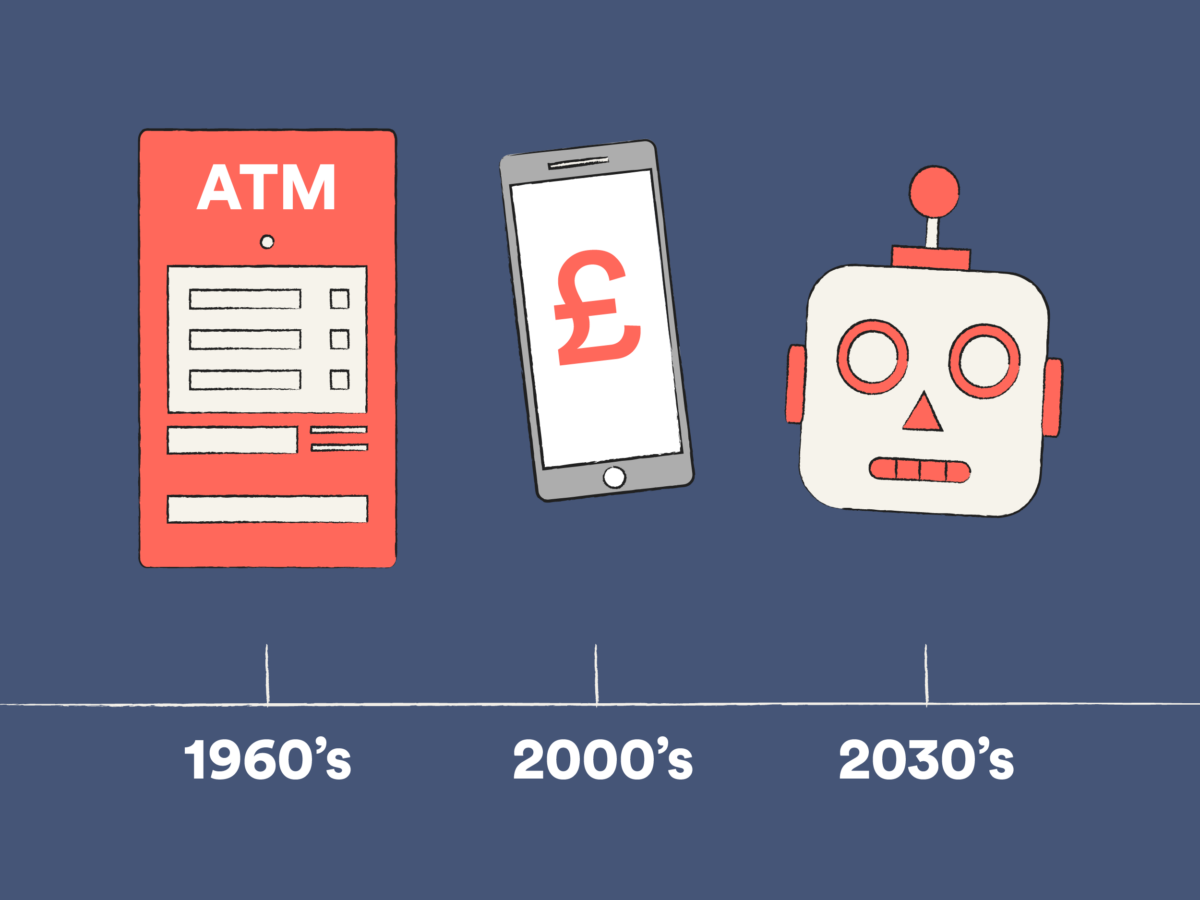Storytelling isn’t just for children to fall asleep to; it is a secret weapon in e-commerce that captures attention, keeps people engaged, and creates an emotional connection between them and your product.
It sounds unfair, but it takes more than just a great product to make a sale, especially with competition biting at your heels. As an e-commerce business, you need to give people a ‘why’ that communicates the values you stand for and the problems you can solve.
Effective e-commerce content marketing has the power to foster an attachment and sell products left, right, and center; you just have to learn the core elements to get started. In this article, we will do exactly that and give you the best chance at success with insights into what this strategy is in more detail and how to use it.
What is e-commerce content marketing?
E-commerce content marketing is pretty much what it says on the tin. It is the way in which your content, whether it be social media posts, videos, or blogs, is marketed to evoke emotions that encourage readers to buy your products or services.
The ultimate goal is to create an online presence by using various different digital marketing techniques to build trust, increase brand awareness, and improve organic traffic. What does this mean for your e-commerce website? An influx of potential customers loving what they’re seeing and developing into conversions.
Unfortunately, it takes more than just a few hashtags and heartwarming stories, you need to develop a fully-fledged marketing strategy that will ensure your content creation is high-quality and aligns perfectly with your target audience.
The good news, though, is that once you know what pieces you need to slot together to complete the puzzle, you’ll be well on your way to becoming one of the strongest e-commerce companies in the game.
Even when you’ve got the perfect combination of marketing campaigns, there is still work to be done. Consistency is key to maintaining the emotional connections you’ve forged thus far, and we all know the best strategies are the ones that adjust to stay one step ahead.
So, as we continue to explore the core elements of e-commerce content marketing, remember that it’s not just a strategy – it’s a customer journey that begins with a spark of emotional connection and leads to long-term revenue growth.
Core elements of e-commerce content marketing
Before explaining the different strategies, let’s focus on the core elements that lay the foundation for successful e-commerce content marketing.
Understanding target audience
Spending hours creating great content just for it to go unnoticed is like a punch in the stomach. It sounded amazing on paper, but why isn’t it performing?
The answer is quite simple, you haven’t created it with your target audience in mind. You do have a target audience, right?
If not, don’t worry because this is a great time to figure that out. It’s important to have this demographic in mind before you begin the marketing process so that you can speak their language and tap into their unique emotional incentives.

You also get a thorough understanding of their preferences, needs, and pain points that you can cater to with your products. No more guessing or wasting time; with a clear target audience in mind, you can hit the ground running and bring in those vital conversions.
How do you find your target audience? Here are the most effective ways:
- Comprehensive brand identity: Before you start looking for your target audience, it’s essential to have a clear and comprehensive brand identity. What values does your brand embody? What makes your products unique? Having a solid brand identity not only attracts the right audience but also helps you communicate what your brand is all about.
- Market research: Explore as much as you can of your industry and niche. Understanding market trends and competitors will help uncover gaps and opportunities to take advantage of.
- Surveys and quizzes: Engaging with existing customers through surveys and quizzes provides valuable insights. Ask about preferences, favorite product features, and where they’d like to see improvements. These responses can help you refine your content strategy and products.
- Buyer personas: Develop detailed buyer personas based on market research and other information gathered from potential customers. These personas represent ideal customers and include demographic information, pain points, goals, and buying behaviors.
Engaging storytelling
We don’t expect you to write a rendition of Cinderella on your product page, but we do encourage you to create compelling narratives that resonate with your audience. Engaging storytelling is the key ingredient to an excellent e-commerce content marketing pie.
Don’t just show the sparkly, flawless stories; keeping it real is important for building trust and ensuring realistic expectations. 88% of consumers agree authenticity is important when deciding what brands to like and support. Of course, it’s all about balance, so don’t be too heavy-handed with the negativity.
Incorporate storytelling into product descriptions, blog posts, and social media updates. Share a story with similar themes and issues to your target audience and how your product swooped in and saved the day. The less obvious you are with this marketing trick, the better – customers aren’t clueless and will spot a marketing ploy in seconds.
Also, try not to be tied down by text. As great as words are and their power to tell stories, multimedia content formats such as podcasts, tutorials, and infographics are extremely engaging and shareable. In terms of social media marketing methods, short-form video brings in the highest return on investment (ROI).
High-quality content
You may have a humdinger of a story but don’t let the rest of your content slip in terms of quality. Consistently high-quality content should be non-negotiable across the board. Let’s take a look into what this requires:
- Quality checking: It’s often the small mistakes that can spoil an otherwise outstanding piece of content. Before publishing, carefully check that it meets your quality guidelines and quickly fix any issues. Even if it’s a missing vowel or full stop, sometimes that’s all it takes to scrap the trustworthiness and professionalism of your brand’s reputation.
- Clarity: You may think using jargon and complex language makes you look like knowledgeable experts compared to consumers, but this is far from true. Sure, demonstrate your skill and comprehension of the subject, but you want to talk to your readers, not at them. They should understand every word and come away feeling enlightened and on the same page as you.
- Audience feedback: Pay attention to feedback from your audience. If readers point out issues or have questions, use those comments to improve wherever you can. They are your best source of insight into what works and what doesn’t.
- Brand voice: In your brand brief, you should have a unique voice locked down. This is the tone, language, and personality in your content that is maintained across all content platforms. It should resonate with your target audience, make you memorable, and set you apart from competitors.
- Accessibility: Absolutely everyone should be able to enjoy your content, whether they have disabilities, use different devices, or are in another country. This means providing alternative text for images, video captions, and user-friendly website design for your online store.
Consistent brand identity
Having one unique identity in terms of voice, imagery, and values should be applied to all content marketing efforts, even including white papers, call-to-actions (CTAs), and frequently asked questions (FAQs).
This is incredibly important to remember as consistency builds trust and long-term, loyal customers. It also helps your audience recognize your content among competitors. Having this sense of connection develops deeper, more withstanding bonds that are quite rare in today’s fast, unpredictable market.
Loyal customers are your brand’s best advocates. They not only return for repeat purchases but also recommend your specific products and services to others. This word-of-mouth marketing is extremely powerful.

Search engine optimization (SEO)
As you weave your spectacular stories, be sure not to ignore keywords. Carry out some keyword research and sprinkle them naturally throughout your content with optimized headings, tags, and descriptions to help boost visibility.
Backlinks, or inbound links from other websites to your relevant content, are also super helpful and will emphasize the points you make throughout your blog posts. They must be from trusted sources that you want to associate with. This will make search engines rank your content high and therefore lead to more people clicking on your link.
Span multiple channels
All successful e-commerce content marketing strategies span multiple channels. This means you can cast your net out to catch a much broader audience. For example, if you only promote your product through TikTok videos, you’re neglecting a large portion of your target audience.
Additionally, adapting your content to each platform while maintaining consistent messaging increases engagement and recognition. You won’t only connect with more people but on a deeper level, so what’s not to like?
Can evolve over time
Being stuck in the past is a killer for e-commerce brands, but the future’s where to be. The digital world moves at an increasingly fast pace, but that’s not necessarily a bad thing. If you learn to embrace the change, there is an opportunity to ride the wave and make it work in your favor.
Therefore, adaptability is your superpower among the many other e-commerce companies that get left in the dust. Keep a close eye on industry trends and consumer behavior using data analytics and metrics.
E-commerce content marketing strategies
Right, let’s get started by listing some of the main e-commerce content marketing strategies that you can use to get the ball rolling.
These are just some of the most notable ones that have proven time and time again to be effective, but don’t let us hold you back. If you’re feeling creative and confident enough to push some boundaries, these strategies can serve as inspiration for your own twist.
Video marketing
91% of businesses use video as a marketing tool. This isn’t just a coincidence or fleeting trend, it has been shown repeatedly that video content is the most successful in engaging audience members and being easy to share on various platforms.
However, there’s a right and a wrong way to go about this. Your videos should have a clear narrative that aligns with your brand’s values and resonates with your audience. If your video isn’t particularly interesting or engaging, you won’t witness the power of video marketing.
Maintain a consistent upload schedule to show you mean business. Users will rely on seeing something new and refreshing every day, week, or month. Once you have a few videos published, measure the performance of each one in terms of view counts and conversion rates to see which ones work best.
User-generated content (UGC)
Now, let’s talk about user-generated content (UGC). It is a marketing strategy that harnesses the voice of your customers to become advocates and testimonials of your brand. But, it’s a bit more than a strategy; it’s a testament to the trust and loyalty your customers have in your products.
Since the messages come from existing customers, 90% of consumers will trust it more than the brand itself. There are no buzzwords or business jargon in UGC, and it comes across as completely authentic, which is one of the reasons it hits so close to home.
Having customers showcase how they use your product and how they benefit from it in different ways is also a fantastic promotional method. It’s cheap, effective, and, most importantly, completely genuine.
Influencer marketing
71% of shoppers say they’re more likely to buy a product recommended by a social media influencer they trust. As we just mentioned, authenticity is essential for bridging the gap between traditional advertising and genuine human connection.
This is why influencer marketing is quickly becoming one of the most effective e-commerce content marketing examples. It takes a lot of the weight from your shoulders when it comes to acquiring the audience, thinking of creative ideas, and making content resonate with every aspect of your market.
Essentially, influencers become external content creators who aim to promote what you do to the target audience. This content can take many forms, such as social media posts, videos, blog reviews, or endorsements.
Email marketing
Before you get the wrong idea, email marketing doesn’t mean constant spamming. In fact, when done successfully, it is the opposite. To stay out of the dreaded junk folder, you need to send emails that are not only worth opening but also eagerly anticipated.
One of the best things about email marketing is that you, as the brand, can personalize emails to align with the particular audience segment and past interactions. For example, if a recipient has recently looked through your selection of products, an email with recommended similar options will feel helpful and attentive rather than pushy.
Bear in mind, the language you use in these emails will go a long way. Treat it like a conversation between friends. A personable tone that provides valuable information, updates, promotions, or even just to say hello and touch base are some elements to think about when exploring this strategy.

Infographics
You could be talking about something incredibly niche and somewhat boring (to some), but if it’s showcased in an infographic, users will be captivated. This type of content takes complex information and presents it in a visually appealing, engaging way.
For the best results, infographics should be:
- Visually appealing: Rope readers in with eye-catching colors and a compelling headline or question. It’s even better to make the colors and design elements correlate with your brand guidelines.
- Easy to understand: The whole point of infographics is to break complicated things down into bitesize, comprehensive parts. Don’t make them too cluttered or hard to follow.
- Accessible: Text should be readable and free of jargon or lots of numbers and figures – that’s what the pretty images are for! All users should be able to enjoy your infographic so provide alt text that describes the infographic as well as contrasting colors for those with limited vision or color blindness.
- Shareable: To boost your brand’s visibility, make infographics shareable to make your mark on other social media platforms and audiences. Make it high-quality without making the file size too big, and have social media links at the bottom.
- SEO optimized: Properly optimize your infographic with relevant keywords, alt text, and meta descriptions. This will improve its chances of ranking well on search engines, driving organic traffic to your e-commerce site.

Why not go a step further and make your infographics interactive? Do this by adding in some clickable sections or hover-over details to give users more information and links to related content. This is a fun way to keep people engaged and spend more time on your page.
Seasonal campaigns
Seasonal campaigns let you prove to customers you are in tune with their needs, whether it be Halloween, Valentine’s Day, or Christmas.
Tailoring your content to match these natural flows of human experiences keeps you relevant and at the forefront of their minds. So, when they need an Easter Bunny-themed picnic set, they know who to go to.
As well as maintaining a proactive marketing strategy, seasonal campaigns create a subconscious sense of urgency which encourages users to grasp the deal before the season passes. This leads to an increase in engagement, high conversion rates, and a boost in brand loyalty.

5 Benefits of e-commerce content marketing strategies
To wrap it all up, e-commerce content marketing strategies offer a lot of benefits that can streamline your sales funnel process by encouraging users to trust your e-commerce store and come back for more.
1. Spreads awareness of your brand
One of the fantastic perks of diving into e-commerce content marketing is how it helps get the word out about your brand. With good content consistently rolling out, more and more people get to know about your brand, your products, and what you’re all about.
2. Algorithms and people trust you
When your content hits the right chord with your audience and is optimized for search engines, it does wonders. It gains trust not only with those search engine algorithms (hello, better organic search rankings!) but also with real people. Trust is a precious asset in drawing in and keeping customers.
3. Boosts customer engagement and loyalty
Telling stories that your audience loves builds genuine connections with your audience. These connections lead to customer loyalty. Loyal customers are more likely to keep coming back for more and become your brand’s most powerful promoters.
4. Saves money
Many e-commerce content marketing strategies are pretty budget-friendly when compared to traditional advertising.
Take user-generated types of content, for example. Your customers do the heavy lifting when it comes to creating effective content. It not only cuts down your marketing expenses but also keeps things authentic and relatable.
5. Long-term growth and success
It’s not just about quick wins; e-commerce content marketing is about setting the stage for enduring brand presence and customer relationships. This paves the way for sustained growth and revenue over the long haul.
The happy ending
Your product is the customer’s happy ending in this story. It’s the solution to their problems. But for them to reach that final page, you must guide them through the buyer journey with valuable content.
It may seem impossible right now, but getting your content seen by those who matter is doable; you just need the right strategies. If we’ve done our job, this article has inspired you with new ideas of how to turn your run-of-the-mill content into stories that drive human connection and conversions.









